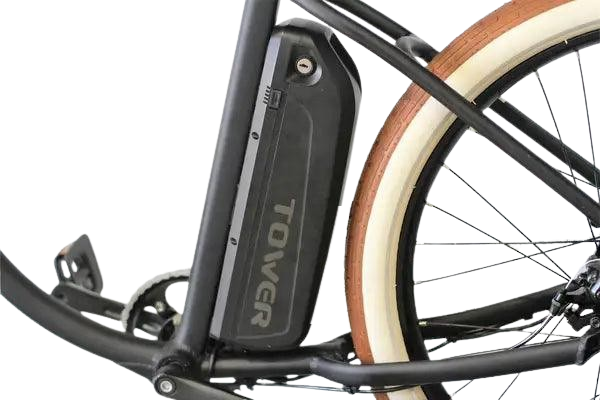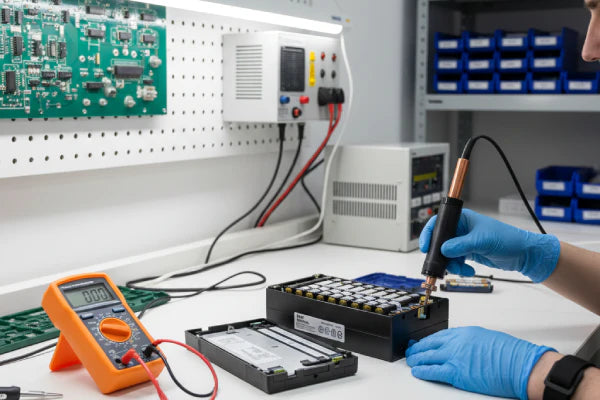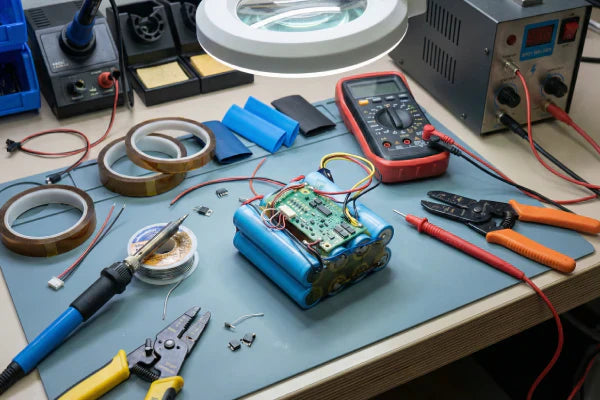Electric bicycles (e-bikes) have revolutionized the world of cycling, offering valuable assistance to cyclists thanks to their assisted motors. At the heart of these innovations are batteries, which are a crucial element in terms of both performance and cost. Understanding how they work, how to maintain them and how to use them is essential for any e-bike owner.
Understanding the different types of batteries
Lithium batteries
Lithium batteries are currently the most widespread in the world of e-bikes. Known for their lightness and efficiency, they offer a significant lifespan of up to 1,500 charge and discharge cycles. This performance makes them a preferred choice for the majority of users.
Lead batteries
Less popular due to their greater weight, lead-acid batteries are distinguished by their robustness and more affordable cost. They are also appreciated for their ease of recycling.
Nickel batteries
Nickel batteries, although offering a lightweight alternative, are less preferred because of the memory effect and their tendency to self-discharge. They require special attention when recharging to maintain their efficiency.
How to remove the battery from your electric bike?
Removing the battery from an e-bike is a simple procedure, but essential for maintenance, charging or safety of the bike. Depending on the model of your bike, the removal method may vary slightly.
Steps to Safely Remove the Battery
Battery handling should always be done with caution. First of all, make sure that the bike system is powered off to avoid any electrical risk. Depending on the position of the battery, whether it is under the luggage rack, integrated into the frame, or elsewhere, the removal method may differ.

For an under-rack battery, use the provided key to unlock and slide the battery out of its mount.
If the battery is embedded in the frame, turn the key and tilt the battery to release it, holding it firmly.
For built-in batteries, a set of keys may be required to safely access and remove the battery.
When should you remove the battery from your electric bike?
For recharging
Although some e-bikes allow the battery to be charged without removing it, it is often better to remove it to ensure a full and safe charge, especially if the bike is stored in a location unsuitable for charging.
To avoid theft
E-bike batteries are valuable components and can be targeted by thieves. Removing the battery when the bike is parked in a public place is an effective preventative measure.
For battery preservation
Removing the battery may be necessary to preserve it in certain conditions, such as winter or extended periods of inactivity. Storing the battery in a cool, dry environment is crucial to maintaining its health.
Identify and resolve battery problems
The performance and durability of an e-bike battery can be affected by a variety of factors, so it's important to know how to identify and resolve common issues to extend the life of your battery.
Signs of a failing battery
A battery that is at the end of its life or is defective has several warning signs. Among them:
- Significant decrease in autonomy despite a full charge.
- Intermittent operation or complete shutdown of electric assistance.
- Charger or battery overheating while charging.
- No reaction when loading.
These signs usually indicate that it is time to check the battery condition or consider replacing it.

How to test and check the health of your battery?
To test the condition of your battery, you can use a multimeter to measure the voltage and current, or visit a specialist. Regular checks by a professional are recommended, especially if you are considering selling or buying a used bike. Bike shops are equipped to perform a complete and accurate diagnosis of the condition of your battery.
Changing and upgrading the electric bike battery
At a certain point, it may be necessary to change the battery of your electric bike to maintain its performance or to take advantage of technological advances.
How to choose and install a new battery?
When considering replacing your e-bike battery, there are several factors to consider:
- Compatibility: Make sure the new battery is compatible with your bike. The specifications must match those of the original model.
- Capacity: You can choose a battery with a higher capacity for longer battery life.
- Brand and quality: Choose brands recognized for their reliability and durability.
For installation, it is often recommended to call a professional, especially if the battery requires specific adjustments on your bike.
Recent Innovations and Trends in Electric Bike Batteries
The e-bike market is constantly evolving, with significant advances in battery technology. New generations offer better range, faster charging and longer life. Stay up to date with the latest innovations to get the most out of your e-bike.
Battery Maintenance and Safety
Proper maintenance is essential to ensure the longevity and performance of your electric bike battery. Likewise, following certain safety rules is crucial to avoid accidents.
Tips for battery care and maintenance
To keep your battery in good condition, follow these recommendations:
- Cleaning: Clean your battery regularly with a damp sponge or low-pressure garden hose. Avoid high-pressure jets which could damage the battery.
- Storage: When you do not plan to use your bike for a long time, store the battery in a dry place at room temperature. A charge of around 60% is ideal for long-term storage.
- Charging: Recharge your battery regularly, even if it is not completely discharged. Always use the charger supplied with your bike to avoid damage.
Best Safety Practices for Battery Handling
Safety is paramount when handling e-bike batteries. Here are some tips:
- Handling: Handle the battery with care to avoid drops and impacts, which could damage the internal cells.
- Supervision: Never leave a charging battery unattended and ensure that the charging area is away from flammable materials.
- Check: After a drop or major impact, have your battery checked by a professional to ensure it is still safe to use.

Environmental impact and recycling of batteries
Environmental awareness is crucial when it comes to e-bike batteries, due to their composition and potential impact on the environment.
Tips for responsible recycling
The end of life of an electric bike battery does not mean that it should end up in the trash. Here are some recommendations for responsible recycling:
- Specialized recycling: Batteries should not be disposed of with household waste. Look for special collection points or recycling programs dedicated to batteries.
- Safety: Before recycling, make sure the battery is in a stable condition, without risk of leakage or chemical reaction.
Ecological impact of electric bicycle batteries
The ecological impact of an e-bike battery depends on several factors, such as:
- Manufacturing: Battery production involves the use of materials and energy, which has an environmental impact.
- Use: Prolonged use and proper maintenance of a battery reduces its overall environmental impact.
- Recycling: Efficient battery recycling helps reduce the environmental footprint by recovering valuable materials and reducing the need for new raw materials.
Conclusion
Summary of key points
In summary, proper maintenance and management of your electric bike battery is essential to maximize its life and performance. It is important to:
- Choose the right type of battery according to your needs.
- Follow the proper steps to safely remove and charge the battery.
- Recognize the signs of a failing battery and know when it's time to replace it.
- Adopt good maintenance and safety practices.
- Be aware of the environmental impact of batteries and participate in their responsible recycling.





